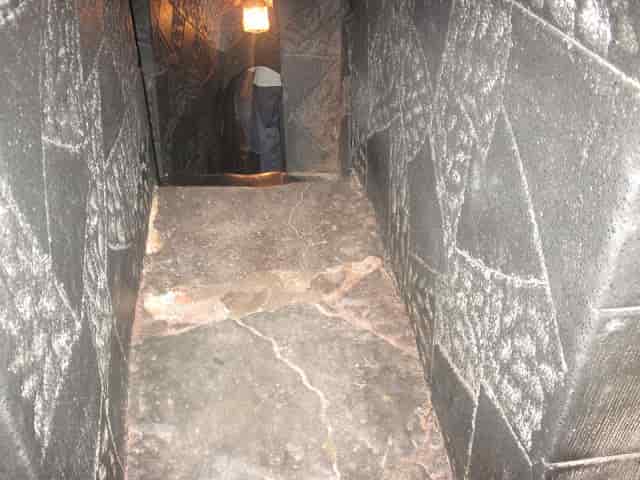Nestled in the heart of Nashik, a city steeped in religious significance, lies the revered Sita Gufa (Sita’s Cave), an ancient site associated with the legend of Ramayana. Sita Gufa Nashik is not only a place of spiritual importance but also a popular destination for pilgrims, history enthusiasts, and nature lovers. The site is believed to be linked to the time when Sita, the consort of Lord Rama, was said to have spent her time in exile during their journey through the forest.
The Sita Gufa Nashik history is rich and steeped in mythology, offering a glimpse into the cultural and religious heritage of India. For anyone visiting Nashik, this hidden gem is worth exploring, with its serene atmosphere, stunning views, and ancient connections to one of the most significant epics in Hindu mythology.
Sita Gufa: The Legend Behind the Cave
The story of Sita Gufa is intertwined with the tale of Sita, the daughter of King Janaka of Mithila, who was married to Lord Rama. According to the Ramayana, when Rama was sent into exile in the forests for 14 years, Sita accompanied him, and they lived a simple life in the forest. During this period, they encountered many challenges, including the demon Ravana, who kidnapped Sita and took her to his kingdom, Lanka. After Rama’s victory over Ravana and his return to Ayodhya, Sita was unfortunately subjected to a trial by fire, which proved her purity.
Before all these events, the Sita Gufa in Nashik is believed to be the place where Sita spent some time during their exile. It is said that she took shelter in the cave during their stay in the region, and this is where she meditated and passed time, reflecting on her life and her journey.
The Sita Gufa Nashik is thus considered not only an archaeological site but also a spiritual place, evoking the presence of Sita and Lord Rama. Visitors flock to this sacred location, drawn by its historical significance and the reverence attached to it through centuries.
Sita Gufa Nashik History: A Deep Connection to the Ramayana
The Sita Gufa Nashik history is deeply tied to the mythology and culture of the region. The cave itself is an ancient structure, and the fact that it is associated with Sita further elevates its importance as a religious site. While the exact origins of the cave remain unclear, it is widely believed to have been a part of the area where Rama and Sita lived during their exile in the forests.
The cave is situated on a hill, surrounded by lush greenery, which adds to its tranquility and charm. It is believed that Rama, Sita, and Lakshmana—Rama’s brother—spent a significant amount of time in the Nashik region during their exile. The cave thus serves as a reminder of their presence and the struggles they faced during that time.
Sita Gufa Nashik: Architectural and Natural Beauty
The Sita Gufa Nashik is a relatively small cave, carved into the hillside, and visitors must descend a set of steps to reach it. The cave is located within a peaceful and secluded area, offering visitors a chance to connect with nature and the spiritual energy of the site.
Inside the cave, there are multiple chambers that are believed to be the places where Sita rested and meditated. The walls of the cave are marked with inscriptions, some of which date back to ancient times, although their exact meanings remain a mystery to this day.
The surrounding landscape adds to the beauty of the cave, offering panoramic views of the hills and valleys of Nashik. The area is also home to many temples, making it a part of the religious circuit that includes other key locations like Trimbakeshwar Temple and Kalaram Sansthan.
The serene atmosphere, coupled with the cool breeze and the rustling of trees, creates a sense of calm and tranquility, making it a perfect spot for introspection, meditation, and spiritual reflection. The sight of the lush greenery and the sound of nature provide a sense of peace, allowing one to experience a moment of stillness and connect with the divine presence that is said to have graced this place long ago.
Sita Gufa Photos: Capturing the Spiritual Essence
For those visiting Sita Gufa Nashik, capturing the beauty and significance of the site is a must. Sita Gufa photos offer a glimpse into the mystique of the cave, its ancient architecture, and its stunning surroundings. Photographs of the cave often showcase its unique rock formations, the tranquil interior with its dim lighting, and the panoramic views of Nashik’s lush landscape.
The cave’s somewhat hidden location, nestled on the hillside, adds to its charm, and photographers enjoy capturing both the architectural features of the cave as well as the natural beauty of the surroundings. Visitors are also keen to click pictures near the entrance, with the scenic hills in the backdrop.
For those interested in spiritual tourism, the photos taken here serve as beautiful memories of their pilgrimage, reminding them of the deep spiritual energy of the location. The cave is also often visited by those who want to experience the sacredness of the site and connect with the divine presence associated with Sita.
Sita Gufa Nashik: How to Reach and Timings
Located just outside the bustling city of Nashik, Sita Gufa is easily accessible by road. From Nashik city, the cave is located about 10 kilometers away, and visitors can travel via private vehicles or cabs. The road leading to the cave is well-paved and offers a scenic drive through the outskirts of Nashik.
For those interested in public transport, local buses and rickshaws are also available, though hiring a cab or a private vehicle offers more convenience and comfort. The cave is located in the tranquil outskirts, ensuring that visitors can enjoy a peaceful and uninterrupted visit to this sacred site.
As for the Sita Gufa timings, the cave is open to visitors throughout the week. The temple and cave generally remain open from 6:00 AM to 6:00 PM, with the peak visiting hours being in the morning. It is advised to visit early in the morning or late in the afternoon to avoid the crowds, especially on weekends or during festivals when the temple and cave attract a larger number of pilgrims and tourists.
Sita Gufa: An Important Spiritual and Historical Landmark
For those visiting Nashik, the Sita Gufa is an essential stop on the pilgrimage trail. Whether one is drawn by the history, the mythology, or the spiritual significance of the site, it offers a profound experience. The cave’s connection to the Ramayana, its association with Sita, and its serene, picturesque surroundings make it a must-visit spot in Nashik.
The Sita Gufa history continues to captivate the imaginations of countless devotees and tourists who come to this sacred place, reflecting on the legendary past that has shaped the region’s cultural and spiritual landscape. From its legends to its natural beauty, Sita Gufa Nashik remains a timeless treasure for both pilgrims and visitors alike.
Conclusion
Sita Gufa in Nashik is more than just a cave—it is a sacred space steeped in history, mythology, and spirituality. Whether you are seeking to learn more about the Ramayana, looking for a peaceful retreat, or simply exploring Nashik’s rich heritage, Sita Gufa Nashik is an unforgettable destination. From its historical significance to its serene atmosphere, it provides a glimpse into India’s cultural and spiritual traditions. Don’t miss the opportunity to visit this divine cave, where history, faith, and nature beautifully intersect.




